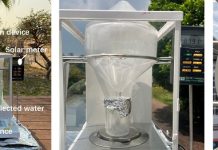
For over a century, the chemical industry has used highly explosive chemicals in important reactions, sometimes resulting in accidents and loss of life.
However, a major breakthrough by the Ritter Group at the Max Planck Institute for Coal Research in Mülheim, Germany, has introduced a safer alternative that could transform how these reactions are performed.
The research, detailed in their recent publication in Science, focuses on aryldiazonium salts, a group of chemicals used for 140 years, particularly in producing dyes.
While useful, these salts are highly reactive and unstable, posing significant risks of explosions and poisoning.
One notable incident was a devastating explosion on December 23, 1969, at Ciba AG in Basel, which resulted in the loss of three lives and serious injuries to 31 workers.
Despite such dangers, the industry has continued to use these salts due to their effectiveness in synthesis.
The team, led by Prof. Dr. Tobias Ritter, has developed a method that makes working with aryldiazonium salts much safer. They have essentially streamlined the traditional process by combining steps to avoid isolating the explosive salts. This new approach, dubbed the “Mülheim Protocol,” significantly reduces the risk of accidental explosions.
Traditionally, producing these salts involves a cold temperature process to stabilize them, which is tricky and limits their use.
However, the new method leverages a natural process called nitrate reduction, commonly found in plants, which the researchers successfully replicated in the lab.
This innovative approach allows the reaction to proceed without the need for extreme cold or strong acids, which were previously necessary to control the reaction’s stability.
What makes this discovery particularly appealing to the chemical industry is its cost-effectiveness. The method uses widely available and inexpensive chemicals, commonly used in the production of fertilizers and fuels, potentially lowering production costs significantly.
This discovery wasn’t planned but came as a happy accident while the team was engaged in another project. The combination of chemicals they tested revealed an unexpected synergy that proved to be a safer route for handling diazonium chemistry, which had been overlooked for decades.
This new method is not only safer but also opens up new possibilities for chemical synthesis that were previously too dangerous to consider.
The Mülheim Protocol is a significant step forward in making chemical manufacturing safer and more sustainable, paving the way for new innovations in an industry often constrained by safety concerns.



